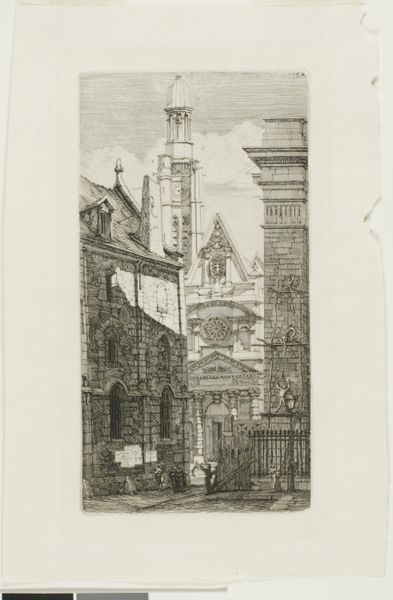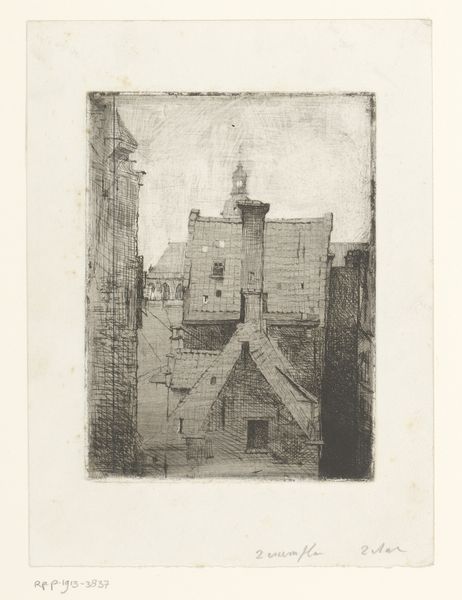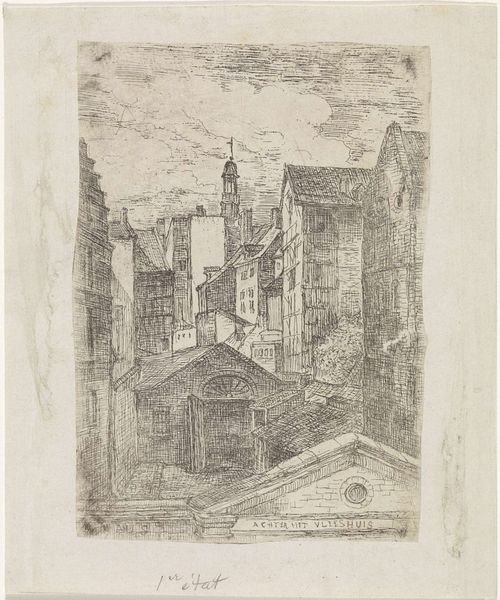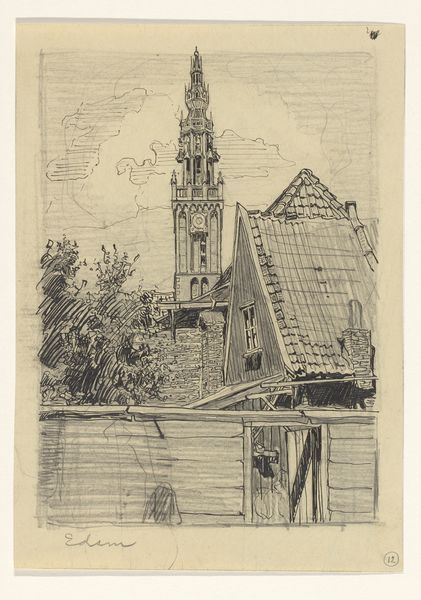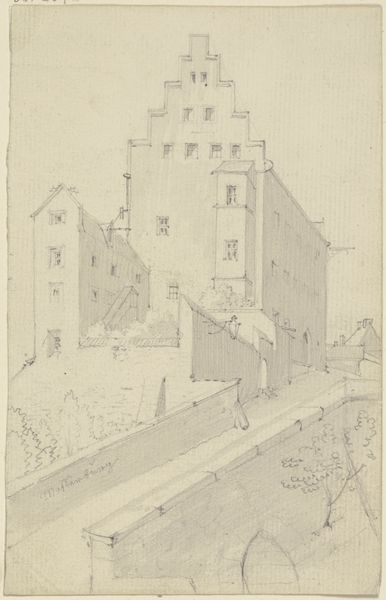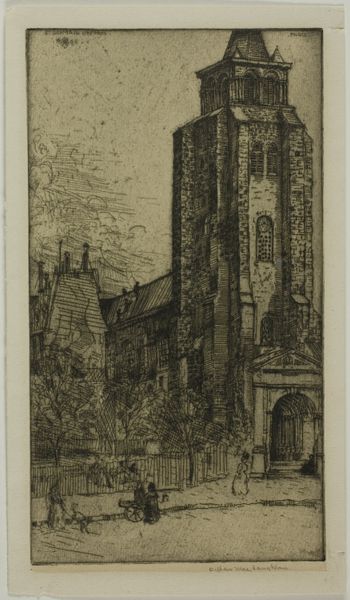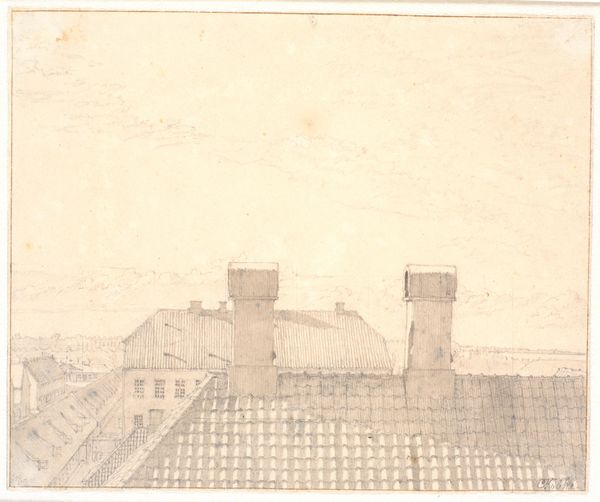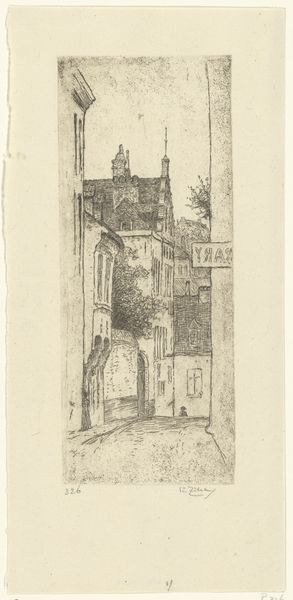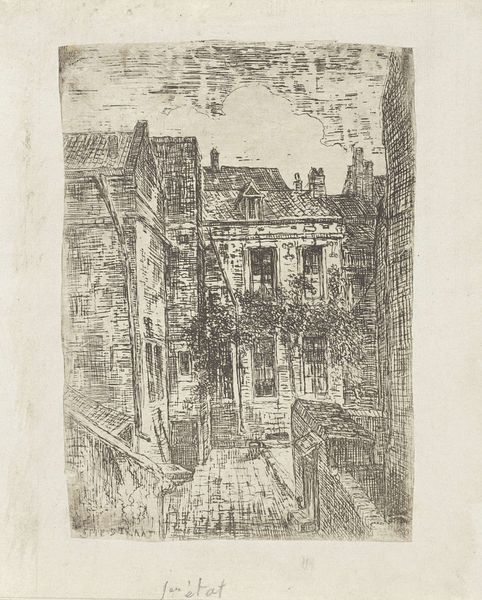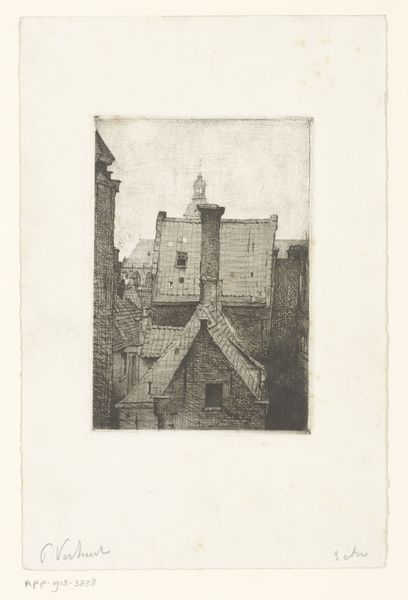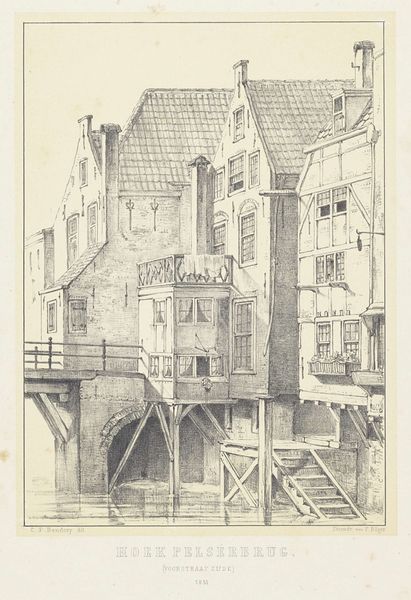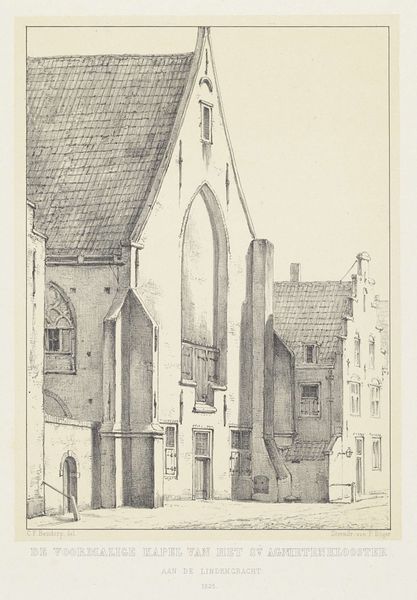
Udsigt over tage mod Frelsers Kirke 1899 - 1902
0:00
0:00
drawing, ink
#
drawing
#
ink
#
cityscape
#
realism
Dimensions: 230 mm (height) x 220 mm (width) (bladmaal)
Editor: This ink drawing, “Udsigt over tage mod Frelsers Kirke,” or “View Over Rooftops Towards the Church of Our Saviour” was created between 1899 and 1902 by Christian Kongstad Petersen. There's something so captivating about the starkness of the rooftops against the towering church spire. What stories do you think Petersen was trying to tell here? Curator: I see a glimpse into the shifting social fabric of turn-of-the-century Copenhagen. Petersen’s choice to focus on the rooftops, rather than a grand, street-level view, positions the viewer in an almost voyeuristic position. We’re looking *down* at the urban landscape, and the Church, a traditional symbol of power, is looming, ever-present. What does it mean to present such a symbol from an oblique angle, shrouded by the everyday structures of ordinary people? Editor: That’s fascinating. It challenges the typical hero-worshiping art we often see. It makes me think about the relationship between the church and the people during this period. Curator: Exactly! Consider also the medium: ink drawing. It’s immediate, reproducible. Not a grand oil painting destined for a wealthy collector’s salon, but something almost democratic in its potential reach. Could Petersen be subtly hinting at the rising voices of the working class, literally raising themselves above established institutions? Does the rendering of the architecture point to how such people were coming to terms with societal structures? Editor: It never occurred to me to think of it like that! The rooftops as representing the ordinary, everyday struggles... and the church, not as a comforting presence, but as a symbol of something looming, perhaps even threatening. Curator: And the church *could* also be read as a beacon of hope for some. It is, after all, still the highest structure in the vista. Perhaps Petersen’s capturing a complex societal tension, rather than a straightforward message. Editor: Wow, I see it now. I appreciate how understanding the cultural and historical context gives such a rich interpretation of the artwork.
Comments
No comments
Be the first to comment and join the conversation on the ultimate creative platform.
